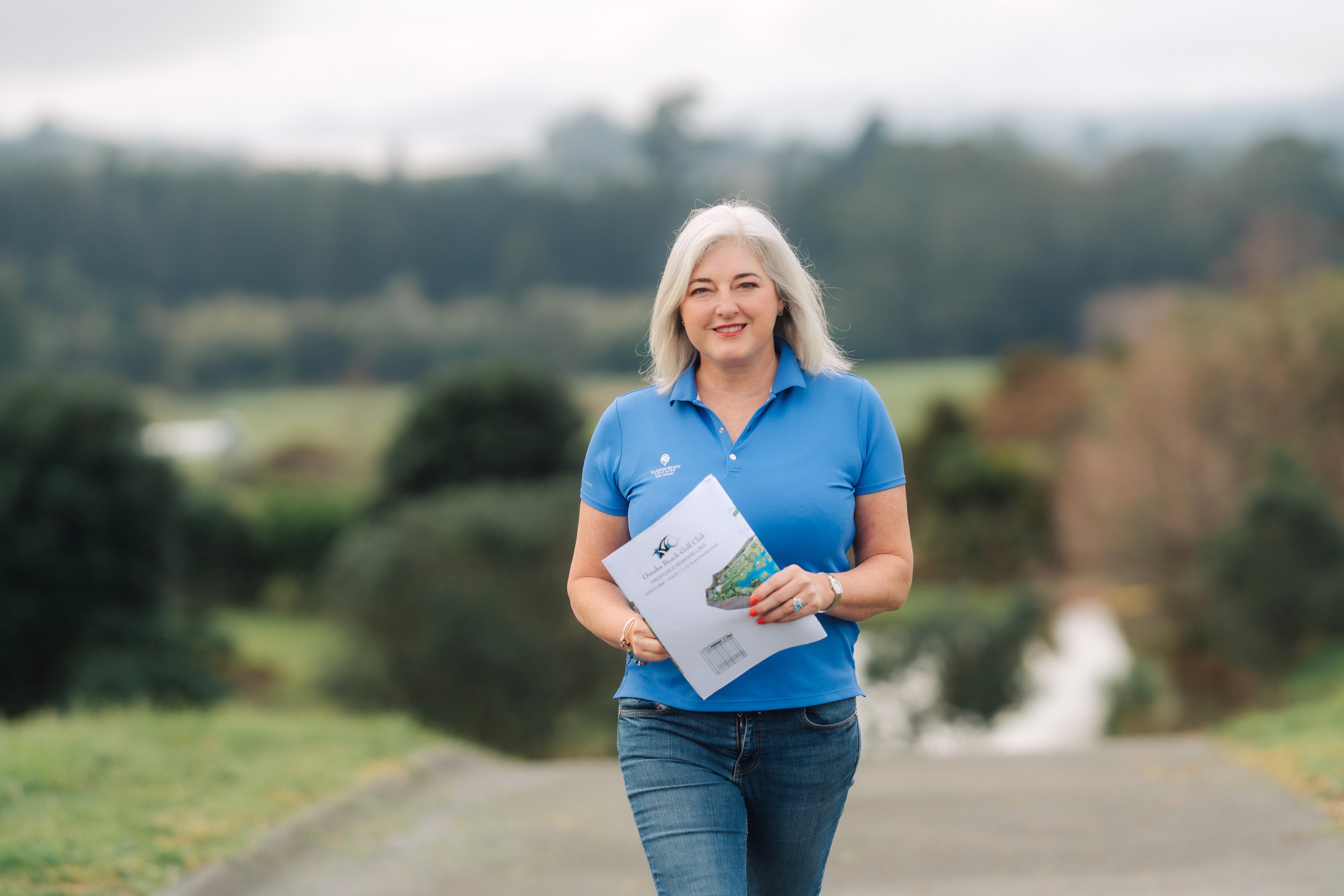CATEGORIES
- Latest News
- Interviews
- Golf Travel
- Features
- Juniors
- Competition
- Events
- Health
- Equipment
- Fashion
- Archive
INFORMATION
CURRENT ISSUE

SUBSCRIPTIONS



Kerr’s instincts were honed at a young age. Her stepfather was a scratch golfer and had a home putting green. She also walked the countryside with her grandparents and not only remembered what she saw but also put her recollections and ideas on paper.
“I can draw,” Kerr said. “I have the ability to draw what I see, and the countryside is so gorgeous. I think (when) you see where the sun is, the shape of the land, and where you’re going to start off, you adjust and develop a feel of all those things.”
Kerr earned a degree in Urban & Regional Planning/ Landscape Architecture from Queensland University of Technology. At age 21, she then headed to Singapore to join her parents who had emigrated there.
It was there that she became acquainted with architect Neil Haworth, who headed the Asian office of the architectural firm Nelson Wright Haworth. She soon went to work for the firm, which at the time also included Robin Nelson and Rodney Wright as Principals.
“I found I enjoyed golf courses more than landscape,” Kerr said.

In the early and mid-1990s, Nelson Wright Haworth was staying busy, thereby providing Kerr with an assortment of learning experiences.
“Neil’s particular talent was sort of the whole overview and the strategy,” she recalls, “and how everything was going to be laid out.”
“Rodney Wright taught me the details of green design. I was just very lucky that they were keeping busy, and we had a lot of new golf courses on the go and I was immersed in everything they were doing from the age of 23.”
Kerr learned the art and science of golf course architecture in an old-school fashion. “We did everything by hand.” she said. “We did all the drawing and earthwork calculations by hand, so we became very good (at making calculations) so we didn’t have to import material. You get a very good feel for that when you do it by hand.”
 For
the next decade, Kerr collaborated on several architectural designs for a variety of projects in an assortment of locales, among them
London, the Czech Republic, China, and Egypt. In 2008, she opened her own practice, Kura Design, and her first solo course design effort
was at Pegasus Golf Club in Christchurch, NZ.
For
the next decade, Kerr collaborated on several architectural designs for a variety of projects in an assortment of locales, among them
London, the Czech Republic, China, and Egypt. In 2008, she opened her own practice, Kura Design, and her first solo course design effort
was at Pegasus Golf Club in Christchurch, NZ.
Kerr’s design philosophy evolved from her work with Nelson Wright Haworth and other architects, among them Gary Player. But she also studied
the work of architects from the celebrated Golden Age, from approximately 1903 to the late 1930s when many of America’s classic courses were
constructed. Pebble Beach, Pine Valley, and Augusta National among them.
Kerr cites the importance of appreciating the work of Golden Age architects like Donald Ross and A.W. Tillinghast while not attempting to
replicate their efforts.
“It’s funny when you do a design,” she said, “because in some ways you’re not really sure what’s going to come out. I think if you were trying to mimic somebody, it would take some of the fun out of it.”
Kerr strives to create courses that offer unique challenges from every set of tees, not just the tips.
“I try to make it fun for people playing from the forward tees,” she said. “That’s not just about making the tee a certain percentage shorter. I actually place the tee and some hazards somewhere so that it’s going to be fun for all players. I think I would say I design courses that are fair but challenging for different abilities.”

At the Pegasus Golf and Sports Club, her initial solo effort (and admittedly her favorite), Kerr put this philosophy into practice.
“We have four sets of tees,” she said, “and so on the middle two (white and blue) a lot of men were trying to play off the white tees thinking, that because it’s shorter it was going to be easier. But they found themselves getting into trouble because of where the hazards were.
It’s not a big victory, but it is quite magical when you can create a quite different experience from different tees.”
But Pegasus, which opened in December of 2009, offers a challenge for elite players as well. The club hosted the New Zealand Women’s Open three consecutive years from 2010-2012.
“What I like about it,” Kerr said, “or what I’m sort of proud of, is I think that every hole is different and memorable and has strategic options for you to bail out if you’re not having a good day, or if you’re having a bad hole.”
Words by Rick Woelfel